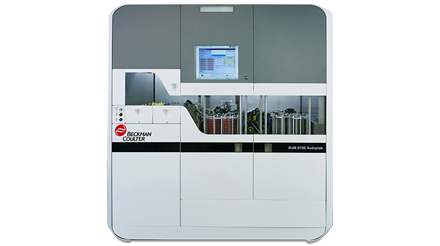Today’s microbiology laboratories need workflow efficiency, artificial intelligence- assisted decision making, and IT integration amid increasing challenges including:
Automation can provide your lab with:
![]()
Increased Productivity
A flexible solution enabling labs to improve throughput & reduce manual work.
![]()
Standardization and Accuracy
Automates specimen processing, culture plate reading & reporting.
![]()
Faster TAT
Get faster patient results by reducing need to sub-culture, interpret & report.
However, some microbiology labs are underserved
Space
Automate
Find a Microbiology Workstation Automation Solution Specific to Your Needs
Flexible
Standalone instruments that are compact in size, easily fits your laboratory’s footprint
Scalable
Get instrument(s) that addresses your biggest bottleneck(s) first, scale up later with increasing volume and budget
Easy to use
Plug-and-play model, routine use within a week
Now there’s a solution for labs facing space constraint, or lacking time to manage the changes
Explore the products that make up this solution
DxM Autoplak
Automates streaking, improves productivity and is compact in size. It streaks 125 plates/hour and can continuously load 120 samples in various sizes.
DxM Trio solution
A high-efficiency, integrated system. Bruker MALDI Biotyper gives ID results within minutes. DxM WalkAway is trusted for its accuracy, with middleware that consolidates ID and AST results to give seamless access to actionable data.
References:
1. 2019 MLO Wage and Vacancy Survey: https://www.mlo-online.com/management/article/21076556/mlos-2019-annual-salary-survey-of-laboratory-professionals. Assume average retirement age is 63 years old.
2. Voice of Customer – Microbiology Automation Jun 2016.
3. Millán-Lou et al., 2018. Comparing Two Automated Techniques for the Primary Screening-Out of Urine Culture.
4. Mejuto et al., 2017. Automated Flow Cytometry: An Alternative to Urine Culture in a Routine Clinical Microbiology Laboratory?
5. Hassoun et al, 2017. Incidence, prevalence, and management of MRSA bacteremia across patient populations-a review of recent developments in MRSA management and treatment.
 English
English



